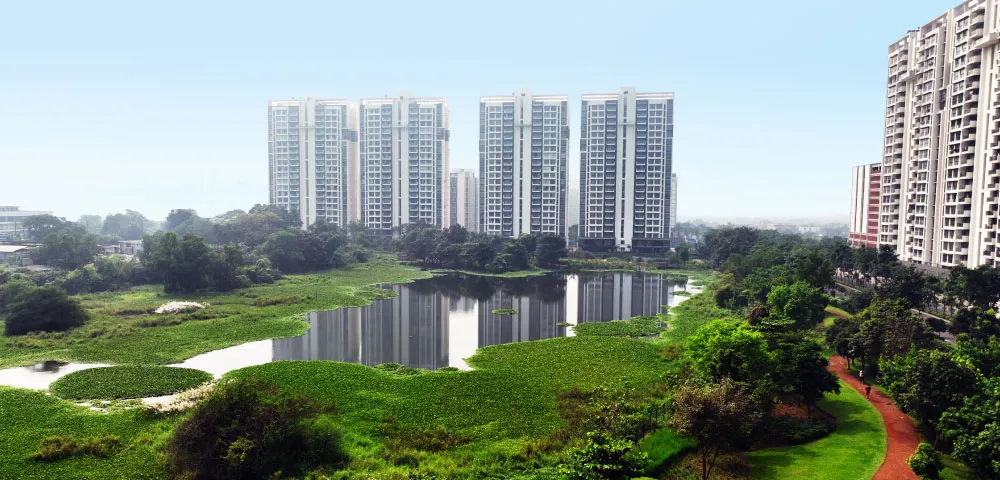Tracking the Trends: How Economic Forces Are Shaping Indian Real Estate in 2025
By lodha
May 30, 2025
Real estate investment in India stands at a pivotal juncture in 2025, influenced by a complex interplay of macroeconomic factors. As one of the primary contributors to the nation’s GDP and employment, real estate continues to mirror broader economic trends, offering both opportunities and challenges for discerning investors and homebuyers alike.
Economic Growth and Real Estate Momentum
The real estate sector is closely aligned with a nation’s economic performance. As GDP rises, so do purchasing power, investor confidence, and demand for quality real estate, supported by growth in employment, infrastructure, and access to finance. Conversely, during economic slowdowns, liquidity tightens, sentiment weakens, and development often slows. In India, however, sustained GDP growth has continued to support real estate activity, particularly in urban hubs where infrastructure and industry evolve in tandem.
As per recent estimates, the Indian real estate market is expected to contribute 13% to the country’s GDP in 2025, up from 7% in 2024—a sharp rise driven by sustained growth and investment. By 2030, the market is projected to reach US$1 trillion, up from US$200 billion in 2021, highlighting the sector’s expanding economic significance.
Inflationary Pressures and Interest Rates
Inflation remains a global concern, influencing monetary policy in India as well. In 2025, the RBI cut the repo rate to 6%. For the real estate sector, this means lower home loan EMIs for current borrowers and potentially increased ease of home ownership for new homebuyers. While higher rates typically temper demand in price-sensitive segments, the premium and luxury housing markets remain largely unaffected, reflecting the resilience of high-end developments and their appeal as long-term investments.
Employment Trends and Urbanisation
India’s young workforce continues to drive urbanisation, with growing demand for office spaces, co-working hubs, and well-connected homes reflecting evolving work patterns. Key sectors like IT, financial services, and e-commerce remain major employment drivers, indirectly supporting real estate growth in metropolitan regions. Simultaneously, government initiatives such as "Make in India" and "Digital India" are catalysing the rise of tier-II and tier-III cities as promising real estate hubs, where infrastructure and lifestyle aspirations converge.
Global Factors and Investment Sentiment
In an increasingly interconnected world, global economic shifts inevitably shape domestic market dynamics. Geopolitical tensions, trade realignments, and movements in capital markets, including stock market performance, play a significant role in influencing investor sentiment. Amid this landscape, India’s macroeconomic resilience and favourable demographics continue to attract Foreign Direct Investment (FDI) into real estate.
Institutional investors, sovereign wealth funds, and private equity players are deepening their commitments to India's real estate landscape, particularly in commercial office spaces, warehousing, and data centres. This influx of capital not only lends credibility to the sector but also accelerates the evolution towards greater transparency and professionalism.
Policy Initiatives and Regulatory Landscape
Policy interventions have played a crucial role in shaping the sector’s trajectory. Reforms such as the Real Estate (Regulation and Development) Act, Goods and Services Tax, and Prohibition of Benami Property Transactions Act have collectively enhanced accountability and consumer protection.
Looking ahead, continued regulatory clarity and supportive housing policies, including incentives for affordable housing, are expected to drive sustained growth. Furthermore, the government’s focus on green building norms and sustainable development aligns with global trends towards climate-conscious urbanisation, presenting new opportunities for forward-looking developers.
A Landscape of Informed Opportunity
In an environment defined by both stability and transformation, those who approach the market with insight and foresight will find themselves well-positioned to capitalise on the enduring promise of Indian real estate.
In a climate defined by both stability and transformation, those engaging with trusted names, such as the top real estate companies in India, will find themselves ideally placed to harness the enduring promise of Indian real estate.
You may also like



 Enquire
Enquire
 Call
Call
 chat
chat
 Search
Search





